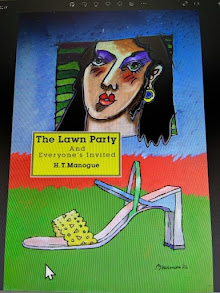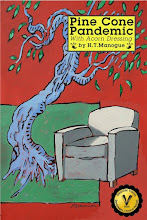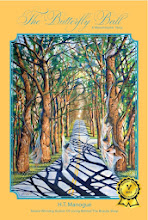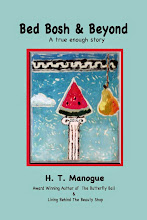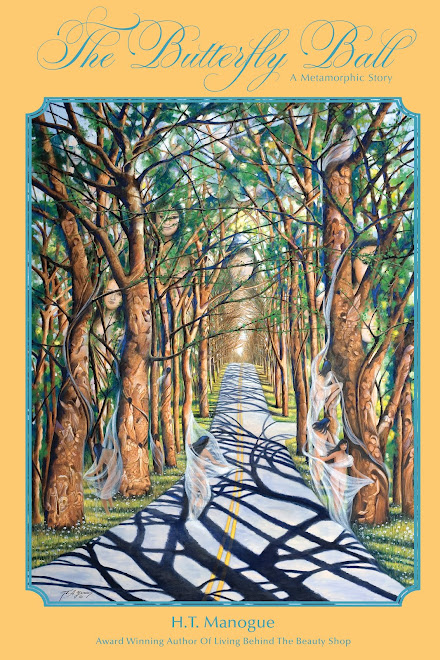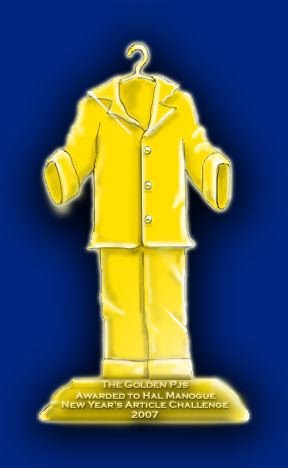Saturday, April 30, 2011
Experiences Are Never Settled
D.T. Suzuki in his 1927 essay, Enlightenment and Ignorance adds a bit of spice to our so called “normal,” thoughts about enlightenment and the path it follows. Experiences are never settled. Every road in life has another avenue or street to explore. Enlightenment is always present on our journey. We just have to read the signs that point us in the right direction. We try to read the signs using our ego, but the ego has nothing to do with triggering enlightenment. We know it when we feel it and then the ego catalogues it in our book of experiences. There is a foreign element in enlightenment that does not conform to accepted beliefs, and that element is the conscious mind that is not attached to the brain.
Perhaps the best way to identify enlightenment is to watch new flowers bloom every spring. We believe those flowers are the same every spring, but each spring brings another element of the consciousness of the flower to bloom. Flowers don't need to find enlightenment they are always enlightened. Flowers express the essence of their interior physically. Our belief structure restricts the flow of our innate enlightenment.
Individual reality sits on a platform of beliefs. The conscious mind is like a flower with no blooms. We create buds of awareness using a creative mixture of our core beliefs. But, our unconscious thoughts are the fertilizer that instigates the unending blossoms of enlightenment.
Tuesday, April 26, 2011
Full Blown
Before a leaf-bud has burst, its whole life acts; in the full-blown flower there is no more; in the leafless root there is no less. Its nature is satisfied, and it satisfies nature, in all moments alike.
Ralph Waldo Emerson in his 1841 essay, Self-Reliance explains the self in simple terms, but those terms get lost in the day-to-day events that shape individual expansion. Consciousness stands on its own, but is connected and aware of all of its parts just like the mountain is aware of the rocks, grass, cliffs, and rivers that make it a mountain. The self is like a mountain that senses other aspects of itself, but puts them in another reincarnational state of existence in order to perceive itself as the top of the mountain of selves.
The self is like a mountain, and the rock layers that form it are like past lives. We are not any part of those past selves, even though they are part of the history of our being. The past is in its own space and time, and exist simultaneously with our present lives just like the strata of rock exist simultaneously with the mountain even though those rocks existed in what we term the past.
What happens at the top of the mountain in terms of experiences affects everything below it so everything that we experience affects these other realms of selfhood. There is a constant interchange even though the conditions are different. Conditions in the valley are different than the conditions of the foothills, but every experience in each has an impact on the other.
The validity of each aspect of the mountain is important, and each aspect focuses on its own reality at its own level. The self has a history, which is constantly changing with each thought and action. Like the mountain we have a history of the present which is ours, but not ours; history does not control us since we can alter it with our thoughts.
The action of each self like the rose and the mountain is satisfied and satisfies the nature of consciousness by being full blown in every moment of existence. Full blown is the art of recognizing the nature of the self as it exists now without comparing it to the other flowers that surround us.
Wednesday, April 20, 2011
True Thoughts
When a moment in our experience, of any kind whatever, inspires us with a thought that is true, that means sooner or later we dip by that thought’s guidance into the particulars of experience again and make advantageous connection with them.
William James in his 1907 essay, Pragmatism’s Conception of Truth digs deep into the channels of the conscious mind, and finds a road drenched with creativity. Our thoughts are psyche energy. Thoughts attached themselves to beliefs, and they form our perceptions and experiences. We believe that most thoughts are true, but once they intermingle with preconceived beliefs they can become distorted.
The natural acceptance of non-physical thoughts is the beginning of a particular story or experience. We may believe that we are one self that does not contain other selves. That is a distorted view of selfhood, but it may be true to the believer. Distorted truths are usually fueled by the religious and scientific inconsistencies in our belief structure.
Our essence distributes counterparts of the self with different features and characteristics in different aspects of physical time. These counterparts are connected so there is a constant interchange of energy that manifests in some way in this and other realities. That truth doesn't mean very much when it comes to our focused reality, but the interaction of our counterparts in the unconscious level does have an impact on thoughts that manifest experiences.
Our beliefs create and shape our reality. If we believe that we are nothing more than a spirit and flesh we will experience situations and people that compliment those thoughts. Every thought is true to the consciousness creating that form of energy, but it may not be true when other thoughts are mixed in with the original thought.
Saturday, April 16, 2011
Measure of Right
Ralph Waldo Emerson in his 1841 essay, Self-Reliance does explain the first step in any accomplishment. That step is an innate part of the nature of nature. Self-reliance is the foundation that fuels desires and awards achievements. It is the basis for our society and yet we toss it aside, and worship icons of politics and trumpeters of religion. We give up our self-reliance in order to conform to the distorted nature of fragmented truths, and non-essential doctrines that bind rather than the release the self.
The identity of the self is hidden behind moralistic tomfoolery that caters to economic power and egotistical bantering. There is no floor to the self and no boundaries set above it. There is no place where identity stops so there are many realities to explore. The self has many strands of consciousness and each strand has its own viewpoint about the nature of its reality as well as the reality of the other strands. The self mixes and merges, but maintains its own identity. The soul as Emerson describes it is a multitudinous identity that is inviolate, but changes with the expansion of self-reliance.
Power is the awareness that a transforming self flows through every aspect of the complete self. Each self is poised and orbits around the nothingness that exists within the layers of consciousness. The self is a mountain. All the parts equal the mountain, but each layer is an individual self-reliant self that express the complete self through experiences and awareness. Power is the measure of right where there is no right; there is only awareness of connected multiplicity.
Tuesday, April 12, 2011
Inviolate Nature
Hui-neng, the sixth patriarch of Buddhism, said that to a monk who was pursuing him and questioning him about leaving the monastery after a personal enlightenment experience in the 7th century. There is an innate something buried in those words that bounces off the walls of rationalism and finds refuge in an unknown reality. The original self is this face that has no form. In other words, pure identity has no form. We speak of one body, one self because we are only familiar with one aspect of the whole self.
Identity is composed of pure energy, which takes up no time or space. The identity is inviolate, but it does expand and change organizations and even combines with other identities in the same way that cells do. Our consciousness and its consciousness merge, so we are composed of a multitudinous individual consciousness that form tiny physical particles within it. These particles are constantly in motion even though the body remains itself. We retain our sense of permanence even though that permanence rides on constant changes. The identity relies on those spiritual, physical, and psychic changes.
Just like the cells the identity is always changing; forming and unforming in a symphony directed by strands of consciousness. Our identity is composed of counterparts that may live in the same century or they may straddle other centuries in order to experience the challenges that exist within perceived time and space. Each counterpart is part of the original self, which is the face that contains all the energy of each individual particle.
Like a mountain, which is multitudinous consciousness composed of rocks, trees, grass, and hills, we ignore our independent counterparts until we become aware of the changes that form our own identity, and impact it in a psychic or physical manifestation. Once aware of these identities they still retain their own individuality and inviolate nature, but changes take place in our identity.
Friday, April 8, 2011
Poetic Verse
But there is some obstruction, or dome excess of phlegm in our constitution, which does not suffer them to yield the due effect. Too feeble fall the impressions on us artists. Every touch should thrill. Every man should be so much an artist, that he could report in conversation what had befallen him. Yet, in our experience, the rays or appulses have sufficient force to arrive at the senses, but not enough to reach the quick, and compel the reproduction of themselves in speech.
Ralph Waldo Emerson in his 1844 essay, The Poet is highlighting an important self-inflicted belief about the self. We believe artists are special, and we are empty of creative expression. We find genius in the thoughts of others, but dismiss the genius within the self. Connected consciousness does not discriminate or judge. We have our own free will and write a story about the self and live it creatively in order to experience the waves of emotion that signal the presence of another story.
Music is language. Painting is language, and most of all thought is language that creates the experiences of cellular and non-physical expansion. Forms, colors, shapes, and shadows contain the consciousness of creativity, and we are connected and participate in this display of contrast and challenges so we recognize the far greater expression of selfhood that waits to be utilized. But, time is the culprit that spoils the expression, since we feel there is only a limited amount of it.
The self can achieve all mental, physical, and biological activities without feeling a sense of worthlessness when we consider that we all have a deep psychic and biological connection, and each one of us paints part of the world picture in a slightly different and sometimes strange way.
The people living in any century experience certain challenges that are the result of private challenges. Those challenges are best worked out with a certain kind of individual framework. Time is meant to be utilized as a method of focus; a divider like a room divider that separates purposes rather than furniture. Each brush stroke in this world painting is a creative work of art that is connected in a unique relationship; like the cells have with one another. This individual creativity is for the fulfillment of the self at a given point in our self-created reality.We always use it in our own poetic verse.
Monday, April 4, 2011
Fragments Of Truth
Mathematicians can solve problems with two variables. On the Newtonian theory, for instance, acceleration varies with distance, but distance also varies with acceleration. In the realm of truth-processes facts come independently and determine our beliefs provisionally. But these beliefs make us act, and as fast as they do so, they bring into sight or into existence new facts which re-determine the beliefs accordingly. So the whole coil and ball of truth, as it rolls up, is the product of a double influence.
Truths emerge from facts; but they dip forward into facts again and add to them; which facts again create or reveal new truth (the word is indifferent) and so on indefinitely. The “facts” themselves meanwhile are not true. They simply are. Truth is the function of the beliefs that start and terminate among them.
William James in his 1906 essay, Pragmatism’s Conception of Truth does shake the tree of knowing, and several shadows scatter and stick to the cob webs of the mind. Truth, as we know it, is not absolute. Truth changes with the thoughts that become beliefs. What James believed in the 19th century are now facts that may or may not contain truth. They simply are. From their existence new thoughts uncover fragments of truth, and we piece these fragments together in a limited order so we can experience them physically at some point in time.
The existence and characteristics of invisible particles is a good example of future truths that are waiting for our beliefs to discover them. These particles defy our knowledge about space and time so it’s hard to believe them. But these invisible particles play a fundamental role in our dream reality. Objects and people in a dream appear and disappear. We innately sense the existence of these phantoms, but never directly encounter them.
These invisible particles or quarks actually rule in another reality, but are latent in this one. Our dream images demonstrate their existence. Quacks can be in two places are once just like we can in dreams. That truth has confounded us for centuries. We believe objects stay where they are suppose to be in what we call our reality. But, we only recognize half our reality because we believe our dreams are not real. The truth is the inner self straddles realities and truths dip in and out of different realities in a creative display of objective as well as subjective consciousness.
